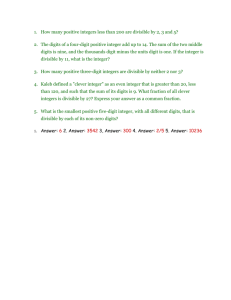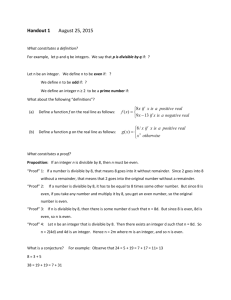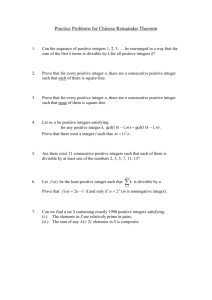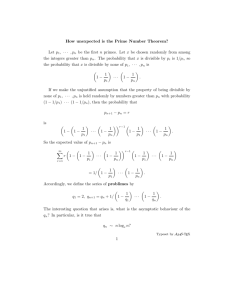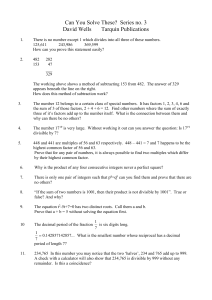Problem 1. Prove that there is a set with an odd number of subsets
advertisement
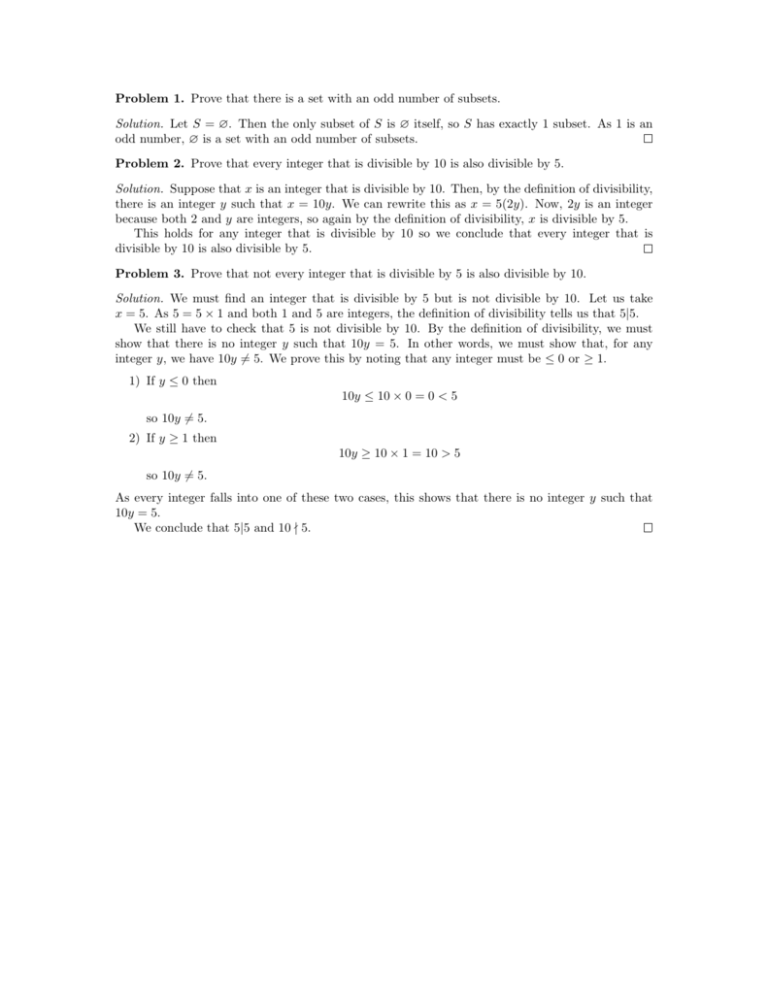
Problem 1. Prove that there is a set with an odd number of subsets. Solution. Let S = ∅. Then the only subset of S is ∅ itself, so S has exactly 1 subset. As 1 is an odd number, ∅ is a set with an odd number of subsets. Problem 2. Prove that every integer that is divisible by 10 is also divisible by 5. Solution. Suppose that x is an integer that is divisible by 10. Then, by the definition of divisibility, there is an integer y such that x = 10y. We can rewrite this as x = 5(2y). Now, 2y is an integer because both 2 and y are integers, so again by the definition of divisibility, x is divisible by 5. This holds for any integer that is divisible by 10 so we conclude that every integer that is divisible by 10 is also divisible by 5. Problem 3. Prove that not every integer that is divisible by 5 is also divisible by 10. Solution. We must find an integer that is divisible by 5 but is not divisible by 10. Let us take x = 5. As 5 = 5 × 1 and both 1 and 5 are integers, the definition of divisibility tells us that 5|5. We still have to check that 5 is not divisible by 10. By the definition of divisibility, we must show that there is no integer y such that 10y = 5. In other words, we must show that, for any integer y, we have 10y 6= 5. We prove this by noting that any integer must be ≤ 0 or ≥ 1. 1) If y ≤ 0 then 10y ≤ 10 × 0 = 0 < 5 so 10y 6= 5. 2) If y ≥ 1 then 10y ≥ 10 × 1 = 10 > 5 so 10y 6= 5. As every integer falls into one of these two cases, this shows that there is no integer y such that 10y = 5. We conclude that 5|5 and 10 - 5.

